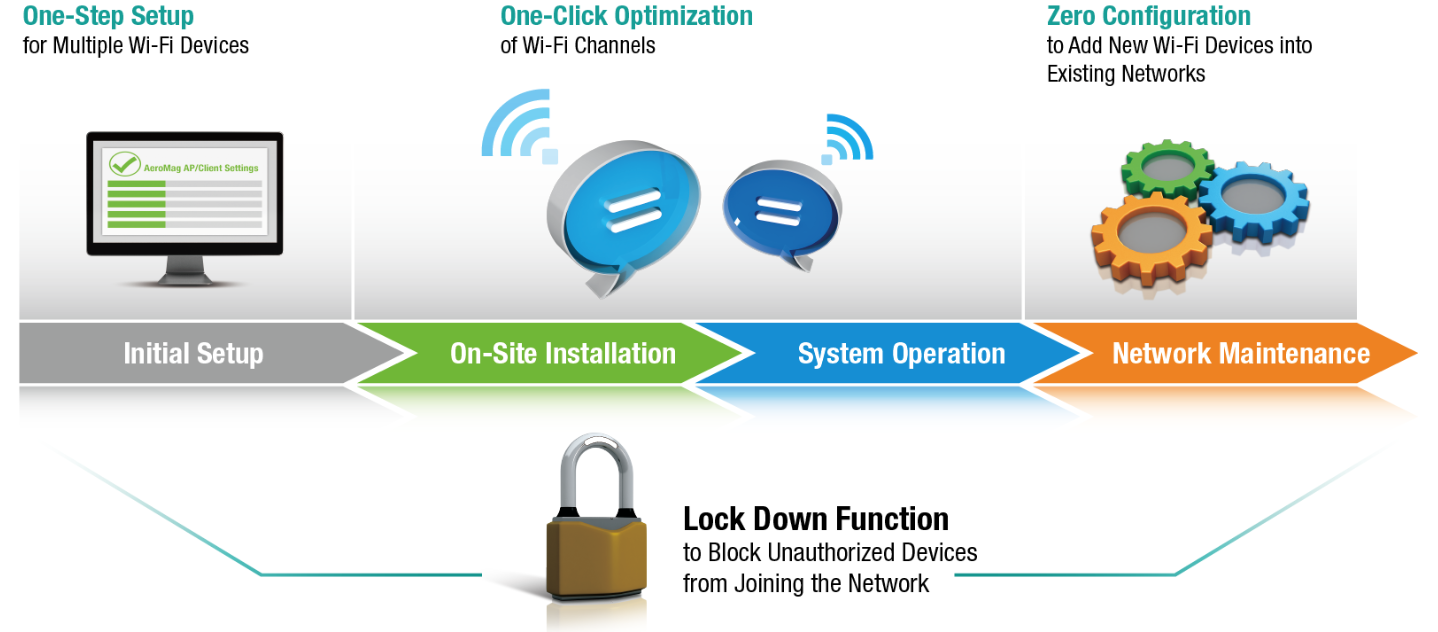Wi-Fi network planning and deployment can be a daunting task for most business operators. Network engineers need to carefully select network equipment, do site planning, deploy equipment, set optimal network parameters, and continuously tweak the network parameters to get the best possible performance. The exponential growth in devices that require seamless connectivity to an industrial network is a challenge that IT professionals are grappling with on a day-to-day basis. In this article, we discuss four techniques that you can use to plan and deploy a Wi-Fi network that can cater to the demanding communication needs of your industrial operations.
1. Undertake a Site Inspection Before Planning Your Network
Spend time to understand the site in detail. For example, take site measurements, identify obstacles and sources of Wi-Fi interference, and decide on installation points for network equipment. If you are unable to visit the site and have to rely on maps instead, make sure that the maps are accurate. This exercise will help you understand the network architecture and requirements more clearly.
2. Create a Network Design and Deployment Plan
Use the information gathered during your site-survey exercise to create a network design and development plan that includes network coverage and capacity and the number and type of APs, among other things. Developing a meticulous plan before implementing a network will save you an enormous amount of cost and time.
3. Deploy and Configure Equipment as per the Network Plan
Use the network design and deployment plan that you created to deploy the network equipment and build your Wi-Fi network so that there is sufficient coverage overlap to avoid blind spots. For example, ensure that AP signals are not obstructed by pillars, shelves, or industrial equipment. To ensure uninterrupted connectivity for clients deployed on mobile equipment or moving parts, make sure that they can switch between APs with minimum downtime.
4. Monitor and Tweak Network Parameters
A Wi-Fi network requires constant monitoring and tweaking to get the performance that you need. In addition, new systems that operate in the same space and subsystems that are connected to your network can slow down your network. The Wi-Fi interference in your network will dramatically increase over a period of time as you expand your industrial network to support additional production lines and new field locations. You will have to add Wi-Fi devices to the existing topology and configure them or deploy new subnetworks to provide seamless connectivity.
Utilizing Solutions that Automate Wi-Fi Device Configuration
You can save a considerable amount of deploynment time and effort by using tools that utilize automatic Wi-Fi device configuration technologies such as Wi-Fi Protected Setup (WPS) and an Auto Channel Function. Automating the configuration of Wi-Fi device settings also helps eliminate human errors during manual mass configuration of devices. However, securing devices and the Wi-Fi network when automatic configuration/provisioning of the device is in progress can be a key concern.
Moxa’s AeroMag—A Wireless Technology for Effortless Wi-Fi Deployment
Moxa’s AeroMag technology takes care of the basic Wi-Fi settings of your devices, saving you considerable effort when deploying your Wi-Fi networks. AeroMag is a useful tool throughout the Wi-Fi network lifecycle. When you are configuring network devices, AeroMag sets up your Wi-Fi connections correctly in a single step. During the installation phase, AeroMag streamlines network operation by analyzing your current operating environment for the optimal channels to use. From a maintenance perspective, new APs/clients can be added to the AeroMag topology without any additional configuration. To prevent unauthorized devices from joining the network, AeroMag provides a Lock Down function that you can use to lock the network topology.

AeroMag is currently supported on Moxa’s AWK-3131A and AWK-4131A access points, and the AWK-1137C client. For additional information, download Moxa’s white paper: A Guide to an Error-Free Wi-Fi Network Lifecycle